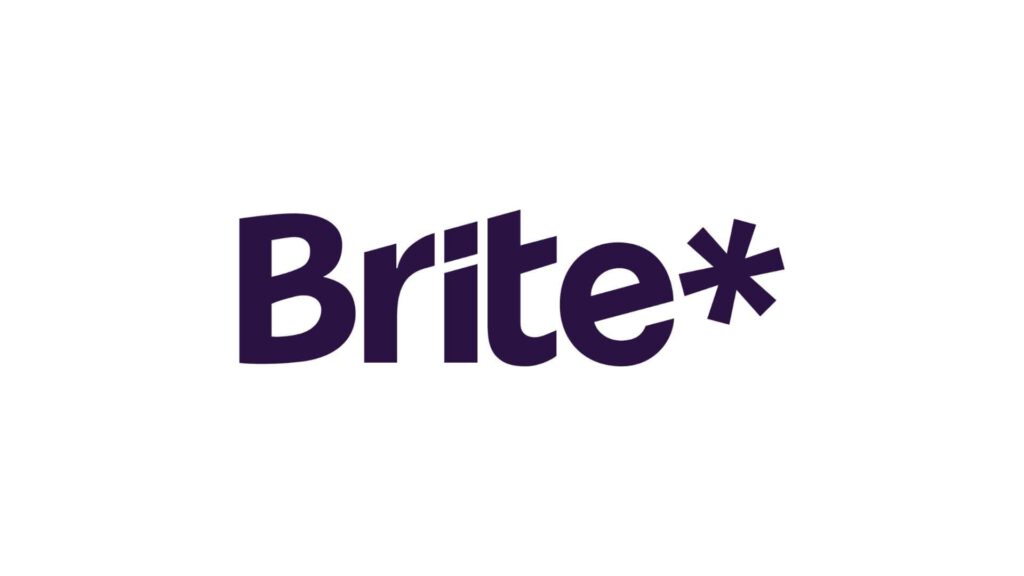Evolution, not revolution: Our breakdown of the PSD3 consultation outcome

12 months after the Payment Services Directive 2/3 (PSD2/PSD3) Consultation closed, we now have a clearer picture of what the future of open banking in Europe will look like. In late June of this year, the European Commission announced a proposal to advance open banking innovation. Now that the dust has settled, we sat down with Lisa Edström, Compliance Director at Brite, to go over some of the proposal’s most interesting and noteworthy outcomes. Read on to learn more and see where open banking innovation is heading in the near future. Overall, what do you make of the PSD3/PSR changes? What is the most significant change? There’s a lot to be excited about. Across the PSD3/ Payment Services Regulation (PSR) proposal, the European Commission (EC) showed it has listened to industry players and addressed feedback from the PSD3 consultation. We’re particularly heartened by the EC’s acknowledgement that open banking in Europe is imperfect. This seems to be part of the reasoning behind the PSR. While it’s yet to pass, this should help provide much-needed harmonisation between member states. Apart from the introduction of the PSR, the incorporation of Electronic Money Institutions (EMIs) as a sub-category of Payment Institutions (PIs) is another big change. Clearly, the EC wants a way to streamline open banking regulation and the supervision of these entities, which makes sense given the similar risks they face. It will be interesting to see if this approach ends up having the desired effect. What do you make of the proposed open banking regulations merging the Electronic Money Directive (EMD) and Payment Service Directive (PSD)? Do you think that the market will be happy with this? This has been discussed for a long time, so I don’t think anyone within payments will have been too caught out by it. The merger should help to create a more cohesive framework for payment/electronic money services. If this occurs, then we might see greater consistency across the market in terms of open banking regulation and innovation, which wouldn’t necessarily be a bad thing. Bringing together the licensing regimes for E-Money Institutions and Payment Institutions will reduce administrative costs. For example, removing the requirement to obtain a new licence in certain circumstances. This is something the market should appreciate. The EC has introduced new rules to enhance Strong Customer Authentication (SCA) and prevent fraud. Will these rules be helpful, or will customers experience more friction? Any move designed to improve fraud prevention performance should be seen as a positive step. Yet, it remains to be seen if this adds significant friction to the user experience. Ultimately, a lot will come down to how specific open banking Account Servicing Payment Service Providers (ASPSPs) and third-party Payment Services Providers (PSPs) implement new levels of SCA within their processes and whether they do so in a way that affects the customer journey. The impact of these measures is still up for debate. What can’t be questioned is the impact of fraud and financial crime across society. Users have become accustomed to tangible security measures like SCA, as they recognise the alternative cost in the form of fraud. So, even if the user experience isn’t as smooth, consumers know why. The “confirmation of payee” is a superb new measure that is being proposed. It allows payers to opt for the payee PSP to verify whether the intended payee’s name and/or IBAN matches with the actual recipient. The payee’s PSP must perform verifications upon request and risks a liability shift if it fails to do so correctly. The EC has probably glanced at the successful introduction of a similar scheme in the UK, which has helped reduce authorised push payment (APP) fraud. Does the PSD3 consultation go far enough to enhance the uptake of open banking in Europe? In its proposal, the EC acknowledged that open banking currently functions imperfectly and outlined measures to improve it. The introduction of the PSR, alongside a third payment services directive (or PSD3), could play an important role in enhancing open banking innovation. Namely, by providing greater harmonisation across Europe. Only time will tell whether further measures are needed to ensure the optimal functioning of open banking. Services like open banking-based account-to-account (A2A) payments are already incredibly convenient, but they haven’t yet gained wide-scale adoption. This means many people are still unaware of their benefits, which needs to change. If the EC can generate more awareness around solutions like this, it would create a ‘snowball effect’ around demand for open banking services, which would inevitably boost uptake across the board. Do you think that the EC is right to practically outlaw fallbacks/ screen scraping? The long-term success of open banking requires that it become the standard for third-party provider (TPP) access to payment accounts held in ASPSPs. In this regard, the restrictions around screen scraping are a step in the right direction, but they will require banks to ensure that open banking API uptime is greatly improved. Pursuing one single approach will hopefully mean that supervisory efforts will be more focused on failing ASPSPs. This would be a welcome improvement since today, it’s almost risk-free for them to fail. Is not introducing a common API standard an oversight? The introduction of the PSR should ensure a greater degree of harmony, but I’m unsure if it goes far enough. We had hoped to see some API standardisation measures within the proposal (as recommended by the European Banking Authority last year) to help raise the overall quality of open banking-based services. Reading the PSD3 consultation, the EC believes that this is not specifically needed to level the playing field and ensure fairer competition. The good news is that more detailed minimum requirements on APIs are part of the proposal. Ultimately, any standardisation measures that improve the reliability and stability of open banking-based payment services will benefit PSPs, as well as consumers. Will the proposed open banking regulations level out the playing field between fintechs and banks? The PSD3 consultation helps to clarify certain areas that were
5 Ways Instant Bank Payments Are Transforming Telecommunications and the Broadband Industry

The European Telecommunications and broadband industry is one of the most mature in the world. In 2022, approximately 90% of adults had internet access in some capacity. How can players in this space attract new customers when it appears that most potential consumers are already accounted for? With much of the infrastructure already in place, internet service providers (ISPs) and other industry bodies must focus on other areas to attract and retain customers. One such key area is billing. For example, subscription services are on the rise. Data from Statista shows, on average, 71% of internet users pay for digital content that is also bundled into their monthly TV/internet bill. Given this, there is now an incentive for ISPs to improve the customer’s purchasing experience via instant bank payments. By giving customers easy ways to manage their connectivity and content consumption, European ISPs can reduce costs, improve their cash flow and create stronger customer relationships all at the same time. To see how, we’re looking at the latest broadband industry trends and cover how instant bank payments are redefining the traditional telecommunications billing process. What are instant bank payments, and why are they important? Instant bank payments (otherwise known as A2A payments) have emerged as a fresh alternative to card payments across a number of sectors. But what are they, and how do they work? As the name suggests, instant bank payments are a type of credit transfer that ensures payees receive customer funds quickly. Depending on your payment services provider, credit transfers may use open banking infrastructure to process payments. Regardless, the advanced digital technology behind instant bank payments ensures credit transfers occur within ten seconds of a payment order. Naturally, this is far faster than the three-to-five working days common within traditional telecommunications billing processes. Instant bank payments are becoming more common in online retail. However, other industries are beginning to adopt them because of the speed, security and convenience available to customers. Given this, how could instant bank payments change telecommunications billing for the better? 5 ways instant bank payments are transforming telecommunications billing 1. Enable seamless connectivity Instant bank payments can facilitate easier subscription activations and contract renewals. By integrating directly with a customer’s bank account, internet service providers can gather payment information and set up contracts quickly. Similarly, instant bank payments can also ensure that customers can easily manage their base contract and added services. For example, instant bank payments can give customers reliable ways to purchase added data plans, call minutes, and promotional entertainment packages. So, customers can stay connected and up to date with the latest content thanks to the added authentication of A2A payments. 2. Reduced churn Since instant bank payments operate between banks, they’re not dependent on physical cards with expiry dates. Customers using instant bank payments in lieu of traditional cards are more likely to use the same service for longer. This is because the expiry deadline is no longer hanging over them. Taking this weight off can, therefore, help to reduce long-term customer churn for businesses. 3. Enhance customer engagement By adopting instant bank payments, European internet service providers can sidestep any potential issues with access to detailed reports and data about end customers and transactions. Service providers can learn more about their customers using data analysis to anticipate their needs and improve their offers. In turn, support agents and product teams can create new revenue sources by deepening customer relationships. 4. Increase security and fraud protection Instant bank payments incorporate robust security measures to reduce the risk of fraud and keep customers’ personal details safe. This is because you need to authenticate with your bank in order to make a payment and identify yourself. Bank authentication, the use of enriched data, Politically Exposed People and sanction screening add a strong level of security. 5. Reduced costs and predictability of cash flow Finally, instant bank payments make it possible for companies to receive customer payments in real-time, which helps with liquidity management. Thanks to instant bank payments, businesses can rest assured they will have access to a cash flow to deal with any financial situation. As a scalable solution, instant bank payments between bank accounts take the hassle out of telecommunications billing and help staff service customer needs more effectively. This means senior business leaders can eliminate payment delays and invest in critical business areas with improved access to capital. How to get started with instant bank payments The first step of improving your billing process via instant bank payments is finding a reliable provider. While doing so, here are some of the most important factors to consider: Deliver enhanced telecommunications billing with Brite If you’re looking to reduce churn while increasing revenues and data security, instant bank payments could be the way forward.Brite’s own instant bank payments Network can help you access a faster, simpler, and more secure payment solution. So, if your business wants to explore new payment solutions, let’s talk.
Instant Giving: How Next-Gen Payment Can Empower Charity Donations

The ongoing global economic downturn is placing additional stress on organisations that collect charity donations working in homelessness prevention, mental health support, and international aid, among others. As a result, charities and non-government organisations (sometimes known as the ‘third sector’) are facing immense pressure to meet the needs of communities that rely upon them. Among these pressures are the changing ways that people send and receive money. Specifically, there’s a rising need for more modern charity payment solutions that reflect the rise in contactless payments, digital wallets and mobile banking. In this article, we’re looking at the changes in how money moves across the third sector and what charities can do to adapt and collect donations more effectively. Read on to learn more. How charity donations are evolving 1. Benefactors’ shifting payment preferences While payment preferences are always changing, one trend is clear: cash is in long-term decline. Pan-European data shows demand for physical currency is decreasing in favour of digital wallets, card payments and bank transfers. In fact, in 2021, cash accounted for just 25.6% and 2% of offline and online spending, respectively. Charities have noticed the trend, too. Cash was the preferred way to give money to charity in 2019. Yet, third-sector organisations found only two in ten donors were using cash just two years later. While POS devices and card readers have become common for in-person transactions, online charity donations are also on the rise. More broadly, surveys show 48% of people prefer to donate through digital channels. This means that third-sector leaders need to explore new payment solutions. 2. Rising interest in unconditional cash transfers Similarly, the form of charity donations is also changing. It’s becoming increasingly apparent that unconditional cash transfers (physical or digital) are an effective way to support vulnerable or developing communities. This stands in contrast to the traditional charity donation model of providing essentials like food, clothing or medical support. Communities may not necessarily need such goods at that particular moment, so they’re sometimes of limited benefit. In contrast, cash is highly liquid. As a result, it allows vulnerable communities to buy goods or services according to their needs as they see fit. For example, research has shown unconditional cash transfers reduce the odds of developing illness by 27% in the short term. We see similar outcomes over longer periods. Studies have shown unconditional cash transfers can promote psychological wellbeing, food security and educational outcomes. What’s more, cash donations create a multiplier effect on the wider economy. This means cash-based charity donations help both individual recipients and their local community. How instant payments can improve online charity donations Given all of the above, it’s clear third sector organisations need to evolve their charity donation model. Namely, towards digital payment systems that make collecting charity donations easier and more effective via unconditional cash transfers. However, charity organisations can go even further by harnessing the power of instant payments. In times of crisis, getting support to vulnerable people quickly is essential. Doing so means helping communities recover from trauma, persecution and stress more effectively. Yet, third-sector organisations face a range of barriers when collecting and disbursing cash-based charity donations. Bureaucratic processes from governments, payment delays from traditional financial services institutions, and payment declines from manual transactions can all prevent support from reaching the people who need it most. Instead, instant payments allow people to give money to charity quickly. In turn, third-sector organisations can send support to vulnerable people more efficiently. With settlement available in seconds, modern instant payment solutions mean third sector orgs can gather charity donations with ease. Best of all, donors can use their smartphone and transfer funds to your organisation at their convenience. However, there are a few things to consider when modernising the way people give money to charity. Most concern the solutions provider you partner with, as you’ll need a reliable payment network to gather donors’ funds safely and securely When comparing different providers, pay attention to their approach to security and design. For example, look out for providers with a recently developed payment platform without legacy problems and a strong customer service and integration team. Receive charity donations faster with Brite Instant Payments Are you ready to access new revenues and support vulnerable communities? Start your instant payment journey today with Brite. Brite is a leading provider of Instant Payments across Europe. Powered by open banking, our technology makes collecting charity donations easier and faster than ever before. With bank-level security available as standard, we ensure the entire process of collecting donations is simple. Best of all, there’s no signup or credit card details required on the donor’s end. Instead, donors authenticate transfers using their bank’s usual identification method; making the entire process quick and easy.Learn more about our Instant Payment solutions and how we can help by getting in touch with one of our team.
How Instant Refunds And Cashbacks Can Help E-commerce Companies Build Their Brand

One of the biggest challenges facing direct-to-consumer e-commerce merchants is customer acquisition. To achieve long-term business growth, vendors must ensure their products and services attract as many potential customers as possible. Instant refunds play an important role in that process. Consumers now encounter more brands than ever online – far beyond what physical stores can provide. The average person sees approximately 10,000 brands every day and 78% of Amazon searches are unbranded. This means customers are more open than ever to trying out unfamiliar brands. But this intense level of brand exposure can be a double-edged sword. The vast amount of options can prove overwhelming, leaving customers with choice paralysis. Individual brands can actually suffer, as it becomes harder to be perceived as unique when competing in a global market. To stand out, e-commerce companies are turning to instant refunds and promotional strategies like cashbacks to gain a competitive edge. But how can instant refunds help e-commerce merchants improve their customer acquisition and retention? In this article, we’ll explore the power of instant refunds and how instant refunds make cashback and refunds easier. Read on to learn more. What are instant refunds, and how do they work? In e-commerce, instant refunds are a service that enables customer refunds to be processed almost immediately after a return or cancellation request is approved – without the typical delay of several business days. Instant refunds are a hallmark of customer-centric e-commerce strategies. An increasing number of businesses and payment platforms offer them, aiming to boost customer satisfaction by reducing friction in post-purchase interactions. Step by step, here’s how it works: Why instant refunds matter in e-commerce Instant refunds aren’t just a convenience: they play a strategic role in shaping the customer experience, enhancing trust, and driving long-term business success. Here are some of the main reasons instant refunds are central in the e-commerce landscape: Improved customer experience Waiting for a refund can be frustrating – especially when delays occur. Instant refunds eliminate this stress, helping prevent customer complaints and ensuring customers feel valued and cared for. Quick refunds also simplify returns, which are a common part of e-commerce. Increased customer trust and loyalty A transparent and fast refund policy is great for building credibility. It signals to customers that the brand prioritises their interests, fostering trust and loyalty. Further, if customers know a business offers a hassle-free refund process, they’re often more likely to shop with them again. A competitive advantage Although they’re gaining popularity, instant refunds are not yet standard across all e-commerce businesses. Offering them can help a brand stand out from the crowd, especially in competitive markets. As they contribute to a seamless return and refund process, they’re also likely to inspire good reviews and recommendations, which are invaluable for attracting new customers. Meeting modern customer expectations Today’s customers expect fast, frictionless service at every touchpoint. Instant refunds meet these expectations, aligning perfectly with the modern customer’s growing preference for convenience. They’re particularly appealing to mobile shoppers, who value efficiency in everything – including their financial matters. Boosting sales via store credit Offering instant refunds in the form of store credit or wallet balance isn’t just a great way to ensure faster refunds – it also increases the likelihood of customers using the refunded amount to make new purchases. In other words, the business gets to keep the refunded money within its ecosystem, helping it mitigate the financial impact of returns and reduce revenue loss. The difference between instant refunds and instant cashbacks Instant payouts can also be used within refunds and cashbacks. Instant refunds and cashbacks work in similar ways from a technical perspective. Although given they serve very different purposes, it’s important to consider them as distinct concepts. The main difference between the two is that cashbacks are promotional in nature, while refunds form a part of customer service. This means that cashbacks should be viewed primarily as a way to attract customers to your business. Namely, by enticing them with the prospect of getting money back when purchasing. You can read more about cashbacks with instant payouts here. By contrast, refunds are usually given to customers who are unhappy with a product or service and want their money back. So, rather than acting as a promotional tool, they help to increase overall customer satisfaction. Or, at the very least, they act as a form of damage control in case something has gone wrong. Instant payouts work exceptionally well for refund processes due to their efficiency and speed. When customers encounter issues or wish to return a product, instant payouts ensure that the refund process is swift and smooth. No vendor wants to be forced to offer unnecessary refunds. However, making refunds hassle-free can remove the sting, contributing significantly to customer satisfaction and retention. By quickly and easily returning customer funds, e-commerce brands can further foster positive experiences and even smooth over negative ones— for example, late arrivals or incorrect items. How instant payouts make cashback and refunds easier Instant payouts are one way that e-commerce companies can strengthen the effectiveness of cashbacks and refunds. But what are they? How do they work? Simply put, instant payouts grant users more control over their cash flow — enabling them to immediately receive funds that would typically take several business days. Real-time transfers mean that, if customers are receiving money from an e-commerce business, the process is instant. This helps to create a sense of instant gratification and enhances the perceived value of the offer. For example, by enabling instant refunds, e-commerce companies can eliminate the frustration of long waiting periods. A smoother and faster experience helps promote positive brand interactions. In turn, this can help establish trust, brand loyalty and increase the likelihood of long-term growth. Leveraging instant payouts for cashbacks Let’s look at one way retailers can use instant payouts. Receiving a small percentage of their total transaction sum back is highly appealing to consumers. Given this, cashbacks are a key promotional tool in customer acquisition and
Brite Payments launches instant payments and payouts in Denmark

Brite Payments Extends Nordic Coverage with Launch of Instant Payments and Instant Payouts in Denmark

Stockholm – 9 August, 2023 – Brite Payments today announced that it has expanded its product coverage with the launch of open banking-powered instant payments and payouts in Denmark. With full product coverage in Sweden and Finland, the addition of Denmark further strengthens the second-generation fintech’s footprint as it continues its expansion across Europe. With a population of nearly 6 million, Denmark has a highly-developed financial services sector; online banking penetration in the country reached nearly 95% in 2022, close behind its Nordic neighbours and well ahead of the rest of Europe. Denmark, much like Sweden, also has a well-established electronic personal identification system. These factors contribute to a significant instant bank payments opportunity in the Danish market, although the retail payments landscape today is still largely dominated by cards. Open banking-first approach to A2A payments The launch of Brite Instant Payments in Denmark gives merchants and businesses across a wide range of industries and verticals a lower-cost alternative to cards. Brite’s open banking-first approach to account-to-account (A2A) payments also enables 24/7/365 instant payments processing while reducing fraud risks. The company’s ‘Single Sign’ capabilities make it possible for consumers to complete payment up to 40% faster, using top-of-mind information and circumventing the need for account creation or registration. Brite Instant Payouts enable businesses to disburse payments – whether in the form of refunds, payouts or withdrawals – in real time. Reliable and timely payouts are proving to be an increasingly important differentiator for businesses operating across diverse sectors, including digital marketplaces, consumer finance, online trading, travel, tickets, insurance and gig work platforms. “Denmark is primed for the uptake of instant bank payments, as awareness of the benefits continues to increase amongst merchants,” said Lena Hackelöer, Founder & CEO, Brite Payments. “The market is a logical next step in our expansion and we’re excited to now offer instant payments and instant payouts to merchants and consumers in Denmark as well as our existing merchant base across Europe.” Brite Payments, which is one of Sweden’s fastest growing fintechs, recently announced the Brite Instant Payments Network (IPN) – a proprietary network that bridges the gaps in Europe’s fragmented real-time payments landscape and facilitates instant payments and payouts in markets and currencies outside the Eurozone. Brite IPN, in addition to underpinning the company’s offering in Denmark with the instant processing of Danish Krone (DKK), also offers merchant FX upon request, helping to lower operational costs for merchants with settlement in the currency of their choice. For more information about Brite Payments, please visit: https://britepayments.com/ About Brite Brite Payments is a second-generation fintech based in Stockholm. The instant payments provider leverages open banking technology to process account-to-account (A2A) payments in real-time between consumers and online merchants. With Brite, no signup or credit card details are required as consumers authenticate themselves with top-of-mind details using their bank’s usual identification method. The company currently operates across 25 markets in Europe and is connected to more than 3,800 banks within the EU.
Could The EU Learn From The UK’s New Payments Architecture?

The UK’s New Payments Architecture (NPA) is set to bring many exciting updates to the digital payments landscape. Recognising the changing dynamics of the industry, the NPA offers several new developments to modernise the UK’s existing instant payments infrastructure. These include enhancing innovation, security and interoperability between payment systems. Instant payments are also gaining traction in Europe and the proposed EU instant payments mandate would give it further impetus. However, the UK is a very mature payments market and boasts a strong track record in financial services generally. So, it’s an important market to watch. That’s why, in this article, we’re exploring the UK’s New Payments Architecture programme and its potential implications for the European payment landscape. What is the New Payments Architecture and what will it do? The New Payments Architecture (NPA) is the UK payments industry’s new system of interbank payments. The NPA’s primary goal is to merge various clearing/settlement systems (such as Faster Payments, BACS and CHAPS) into a unified and modern ISO 20022-compliant architecture. By consolidating different schemes and widening industry access, the NPA aims to accelerate competition and deliver cost-effective payment services. The NPA will also introduce steps to combat fraud and financial crime. Finally, third parties will be able to launch “overlay services” offering additional customisations to serve users’ needs more effectively. New Payments Architecture vs. Faster Payments scheme Some notable differences emerge when comparing the New Payments Architecture and the existing Faster Payments scheme. NPA builds upon the foundation of Faster Payments, aiming to replace it (and potentially include BACS) in the future. Since its launch in 2008, Faster Payments experienced significant growth. Yet, it has also faced roadblocks in terms of access and integration. The NPA seeks to address these challenges by prioritising a simpler, more accessible payment system for business and retail users. However, it will still be some time before Faster Payments becomes a part of the NPA. The New Payments Architecture isn’t expected to launch until mid-2024, with Faster Payments not migrating until 2024-25. Contrasting the UK and EU payment landscapes The EU has made significant strides in establishing efficient pan-European payment initiatives. These include the Single Euro Payments Area (SEPA) and the Target Instant Payment Settlement (TIPS) system. Although, much work remains to be done. Competing schemes within the EU mean that businesses must navigate a more complex payment ecosystem than in the UK. Equally, not all banks are properly integrated with each system. So, businesses need to manage a variety of payment integrations that can take time and effort to maintain. The EU naturally faces additional challenges from being a multinational body. That being said, there are lessons from the UK’s approach to the New Payments Architecture that are worth noting. 1. Collaboration amongst stakeholders The New Payments Architecture has demonstrated the value of collaboration between industry stakeholders. The collaborative approach taken by the Payment System Regulator (PSR), Payments Strategy Forum (PSF) and Pay.UK has yielded significant benefits. What’s more, it provides an opportunity for the EU to adopt similar practices. For example, ongoing consultations on enterprise-specific features (i.e. multi-day bulk payments) within the NPA could mean that adoption is faster than with previous payment rails. The EU can also benefit from fostering collaboration among its stakeholders, such as the European Central Bank (ECB), European Payments Council (EPC) and national payment authorities. Enhanced collaboration would help align objectives and share best practices to enhance the EU’s payment landscape. This is particularly timely as the EU looks at launching PSD3 and a Payment Services Regulation (PSR). 2. Enhancing the strength and speed of instant payments through technology The UK’s New Payments Architecture will embrace emerging technologies such as blockchain, artificial intelligence (AI) and open banking to drive efficiency and security in payments. While the EU will possibly take a more cautious approach – especially with regards to AI – these offer significant potential for the EU to enhance its payment systems, too. The EU is already working to establish rules on AI development, but a finance-specific strategy has yet to emerge. In contrast, the UK has announced a ‘pro-innovation approach’ to AI, signalling a more encouraging environment for firms working in this space. 3. The shared regulatory framework of the New Payments Architecture The UK’s regulatory approach to the New Payments Architecture programme has emphasised data protection and consumer rights. Robust regulations and guidelines ensure payment data adhere to strict standards. Of course, the EU has strong legislation in this area. GDPR – the EU’s flagship privacy framework – sets our clearly defined consumer privacy rights and data collection rules. Yet, the law’s record remains mixed. What’s more, the case could be made for revisiting privacy laws in the age of AI. 4. Better Interoperability Interoperability is a key focus of the New Payments Architecture. By adhering to the ISO 20022 messaging standard, the NPA will allow different parties to work together seamlessly while maintaining a consistent security standard. As with GDPR and privacy legislation, the EU has strong competencies in this domain. A range of European payment systems and financial institutions already use the ISO 20022 standard. So, expanding and encouraging its use further would help create a consistent, secure and scalable instant payments ecosystem. Stay up to date on instant payments trends and more with Brite Brite is a leading provider of open banking-based instant payments and payouts for the European market. We’re always looking at the opportunities and challenges facing businesses and sharing our thoughts on how to respond. Follow us on LinkedIn to see the latest news. Alternatively, learn more about Brite for business or get in touch today.
Apple ramps up pressure on rivals with Tap to Pay UK launch

Why Instant Payments Are the Future of the Events Industry

“Connected”, “inspired”, “energised” – prospects for the events industry in 2023 are looking bright. The majority of consumers plan on attending more live experiences this year and long-term forecasts suggest the European experience economy will generate $123.9 billion by 2030. However, there’s even more growth potential up for grabs via innovative ticketing solutions. Compared to other industries, today’s ticketing functions are outdated. While the events industry could vastly benefit from instant payments, it’s hard to find firms that integrate them. In this article, we’re taking a look at the future of the experience economy and the role that instant payments can play. We’ll also examine where and how senior business leaders can make improvements to the customer journey through payments. Read on to learn more. Trends in the European events industry After a rocky few years, the events industry is back – but not entirely as its old self. Data from Eventbrite’s 2023 Event Trends Report shows customer expectations have evolved. Over 66% of British and Irish customers plan on spending ‘the same or more’ on events in the coming months, with 25-30% of this group considering events as ‘essential.’ These findings have led event organisers and creators to forecast an increase in ticket demand, which is expected to result in a 40% rise in ticket prices. There are also encouraging signs on the B2B side, as brand promotions and professional conferences drive growth. Nevertheless, there are factors emerging that signal the need for change. As always, where spending rises, premium customer experiences are essential. Even more interestingly, attendance patterns and consumer interests are diversifying. Around 50% of consumers plan on attending events online, as it allows them to better fit events around their busy lives. So, despite the post-pandemic live events bounceback, hybrid events are here to stay. What’s more, while music and other live performances are customers’ top priorities, fundraising and fitness-themed events follow close behind. This means that venues and event ticketing platforms must adapt to a new era in the experience economy; where event preferences and participation methods are more varied than ever. Given this, critical elements in the customer experience, like booking tickets and payment, offer untapped potential. Why instant payments in the events industry are lagging While most event providers like theatres and music venues have adopted digital ticketing solutions, they still need to deliver the seamless customer experience that customers now expect. Namely, instant payments that secure their place at their favourite events. Compared to other industries, today’s ticketing solutions are outdated. Delays in payment (among other problems) place immense pressure on digital ticketing solutions. For example, even the biggest event ticketing platforms struggle to cope with consumer demand for live events. As a result, tickets are often oversold, meaning providers are forced to cancel purchases and disappoint customers. Given the rising importance (and hefty price tag) of live events, providers must recognise the need to optimise their event ticketing platforms. Innovative ticketing solutions, which enable flexible attendance options and instant payments, are reimagining the customer experience. This means that everyone, from regional tourist attractions to local cinemas, museums and conference centres, must improve their service. Otherwise, lagging events industry players run the risk of losing revenue to competitors delivering an easier and, most importantly, more reliable purchasing experience. Data from Eventbrite’s global survey showed there’s more competition in the event space than a year ago, particularly in the European region. The benefits of adopting instant payments in event ticketing platforms Instant payments offer a range of benefits to both customers and sellers. Firstly, instant payments ensure customers have a guaranteed place at their favourite events. Immediate settlements allow digital ticketing solutions to issue tickets only when a sale is successful. As a result, event providers and venues receive an accurate tally of attendees ahead of time and no longer need to disappoint customers by overselling events. Secondly, instant payment solutions powered by open banking can help you reduce processing fees from digital transactions and enhance operational efficiency. In turn, you can pass savings on to customers and gain a competitive advantage. Alternatively, you can reinvest the revenue back into your business and enable faster growth. Thirdly, immediate settlements ensure you can improve your cash flow and pay expenses, like performers or catering services, faster. This means you can build a reputation as a reliable host and attract larger performers to your venue more effectively. You could also use your reputation to invite more novel performers to your venue or platform and give customers the diversity they’re looking for. Finally, incorporating instant payments within your event ticketing software can help you tap into the resale market. By enabling more last-minute purchases, you can turn cancelled tickets into revenue and maintain a consistent profit level. The same payment solutions can also help you refund customers quickly, helping you increase customer satisfaction levels and build brand loyalty. Give your customers confidence with instant payment solutions from Brite In-person events hold a special place in consumers’ hearts. As wholly unique and often once-in-a-lifetime experiences, customer expectations can be extremely high. That’s why venues and event ticketing platforms must adopt new solutions to give customers what they’re looking for. Specifically, a guaranteed place at their favourite events and the ability to attend – or not attend – however they see fit.By working with third-party providers like Brite, you can access a faster, simpler, and more secure payment solution. Our Instant Payments Network, enabled by our powerful API, gives you more flexible, predictable pricing. With no downloads or registration necessary, and settlements available in seconds, Brite Instant Payments can help you ensure that your customers always have access to their favorite events.
Brite Payments Bolsters Leadership Team with Appointment of Chief Operating Officer and Chief Financial Officer

Stockholm – 19 July, 2023 – Signalling that it has entered the next phase in its rapid growth, Brite Payments today announced the appointment of Alexander Kassai as Chief Operating Officer and Fredrik Strömqvist as Chief Financial Officer. The appointment of two new senior leaders follows a period of strong growth for the Stockholm-based fintech, which leverages the capabilities of open banking to give merchants and businesses a complete, out-of-the-box instant payments and payouts solution. Alexander Kassai Alexander Kassai joins Brite to lead the company’s operational functions in his role as COO, bringing more than a decade of fintech experience, including at Klarna, where he led global merchant support during the company’s hyper growth phase. Most recently, he served as CIO at Aleris, a leading Scandinavian healthcare provider. At Brite, Kassai will focus on scaling operational teams that deliver a first-class consumer and merchant experience. “What attracted me to Brite was the opportunity to join an experienced and highly capable team that has built a top-class product that solves major pain points for businesses,” said Alexander Kassai, COO, Brite Payments. “In light of Brite’s rapid growth, I will be focused on how technology, including process automation, can support our further expansion; this will be all important as we scale up and serve customers in more markets. I believe my background in technical as well as operational roles will also help greatly as we continue to innovate with open banking-based instant payments.” Fredrik Strömqvist Fredrik Strömqvist has taken on the role of Chief Financial Officer following a stint as interim CFO at FOREX, a leader in the Nordic travel money market. His career spans more than 15 years in the financial sector, including roles at Oliver Wyman, Skandia, SBAB and DLL. Strömqvist is also responsible for developing and maintaining relationships with a growing network of banks. “I’m excited to lead the finance function at Brite, which is crucial to supporting our local operations and is a key driver of our growth. I am also looking forward to helping shape the strategic direction of the company,” said Fredrik Strömqvist, CFO, Brite Payments. “Brite has already demonstrated that it has a very attractive offering in the instant account-to-account (A2A) payments space, and I believe it has the people as well as the technology to be a true instant payments leader.” “Alexander and Fredrik are joining at an exciting time for Brite, bringing extensive experience to the business that will be invaluable as we continue to grow,” commented Lena Hackelöer, Founder & CEO, Brite Payments. “Our management team will benefit from their functional expertise, as well as their proven leadership capabilities. The finance and operations teams they lead are absolutely integral to our future success.” The appointment of new senior leaders at Brite follows strong headcount growth in 2022, with the company nearly doubling in size. It also caps off a busy period during which the open banking payments specialist announced its Brite Instant Payments Network (Brite IPN) – a proprietary network that enables instant payments and payouts through open banking and helps close the gaps in Europe’s fragmented real-time payments landscape. For more information about Brite Payments, please visit: https://britepayments.com/ About Brite Brite Payments is a second-generation fintech based in Stockholm. The instant payments provider leverages open banking technology to process account-to-account (A2A) payments in real-time between consumers and online merchants. With Brite, no signup or credit card details are required as consumers authenticate themselves with top-of-mind details using their bank’s usual identification method. The company currently operates across 24 markets in Europe and is connected to more than 3,800 banks within the EU.